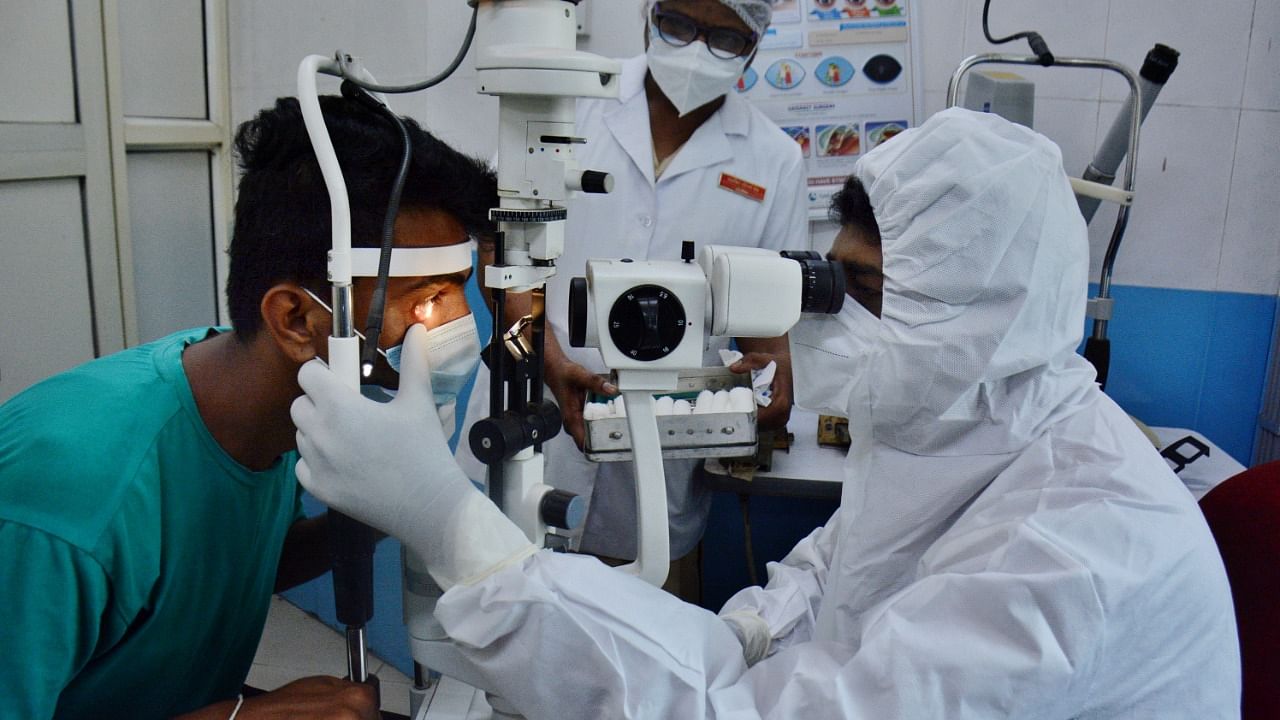
Despite the dramatic fall in fresh Covid-19 cases, the state continues to register several post-Covid mucormycosis cases. From July 22 to August 7, there have been 156 additional cases and 59 additional deaths.
Official data shows that on August 7, the state had 3,718 cases in total, out of which 51.5% of cases (1,917 people) were still under treatment and 9.89 per cent or 368 people had recently died of the complication which causes necrosis of tissue.
The largest number of mucormycosis cases were in Bengaluru Urban (1,181), as were recoveries (202), followed closely by Vijayapura (199).
Stunningly, some 334 people who suffered from the complication left treatment against medical advice. The highest numbers of these withdrawals were in Tumakuru (31), in addition to Davanagere and Kalaburgi (30 each). The curative rate stood at about 29.5%, with 1,099 people having recovered from the condition up to August 7.
Dr Manoj Kumar K V, Dean and Director, Shri Atal Bihari Vajpayee Medical College and Research Institute, which oversees Bowring and Lady Curzon Medical College Hospital (a major centre for treatment of mucormycosis), said the number of new cases has fallen dramatically.
“However, it is possible that if Covid-19 cases rise in future, so will mucor cases,” he said, adding that Bowring had treated over 500 cases to date, out of which about 154 required surgery.
Burden of treatment
The cost of future treatment is set to impose another burden not just on future sufferers, but also on the government preparing for the third wave.
The Department of Medical Education, for instance, states that it will require Rs 17.09 crore to outfit 12 colleges with equipment to treat the complication.
Equipment to be procured include microdebriders (a surgical tool), ENT imaging systems, cobaltor surgery systems and fess instruments.
“In the meantime, we haven’t seen any new cases in about 2-3 weeks, and it has been a fortunate thing,” explained Sabeel Nazir, trustee of the Bengaluru-based NGO Naasih Foundation, which has been aiding disadvantaged families.
“Patients in private hospitals bear all the medical costs out of their own pockets and the government has done nothing to cap prices,” Nazir said.
“The financial burden was higher in large hospitals where a stint of three to four weeks of hospitalisation is mandatory, with associated drug and hospitalisation costs. Smaller hospitals, however, allow patients or their families to independently procure Amphotericin B, the drug of choice to treat the complication,” he added.
While the drug’s price has dropped by 20 per cent from Rs 7,400 to Rs 6,000 per vial in recent weeks, a typical course of treatment requires between 52 to 75 vials.